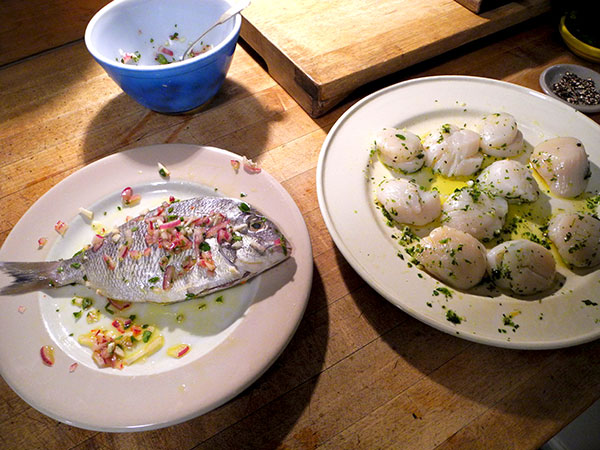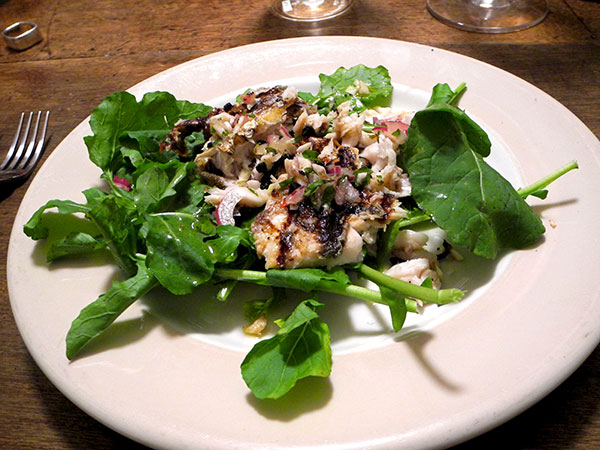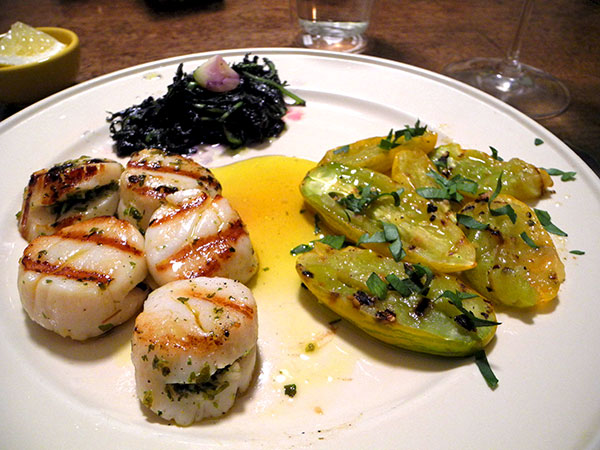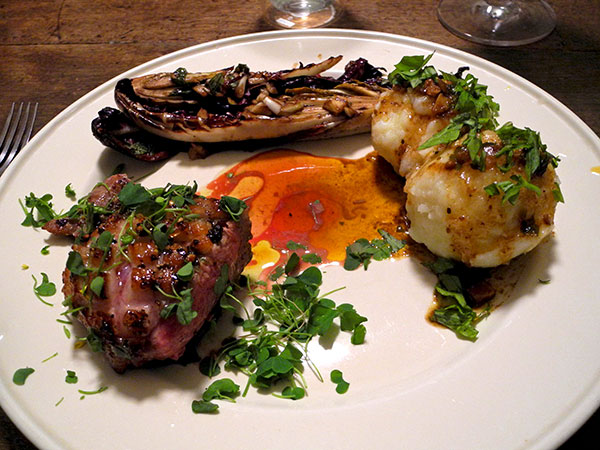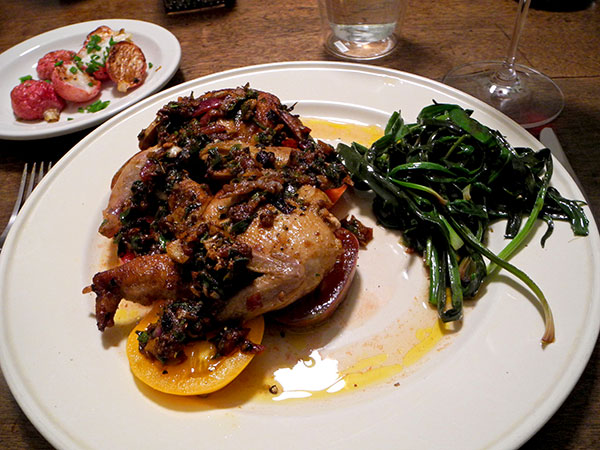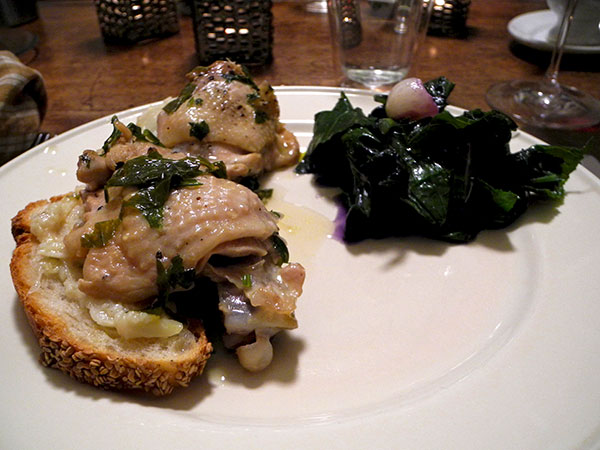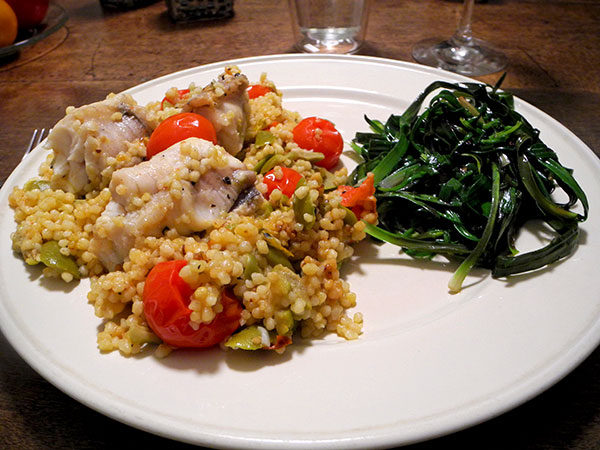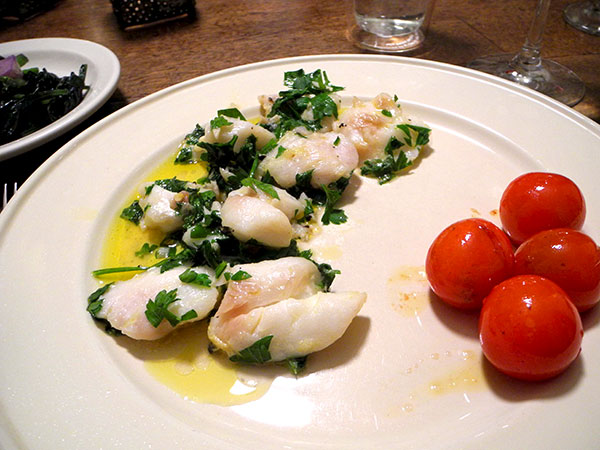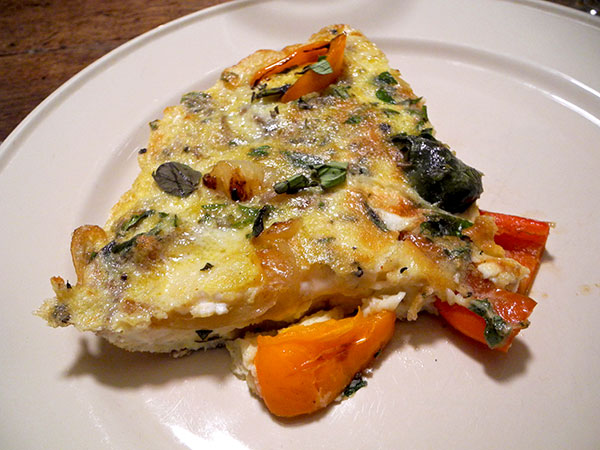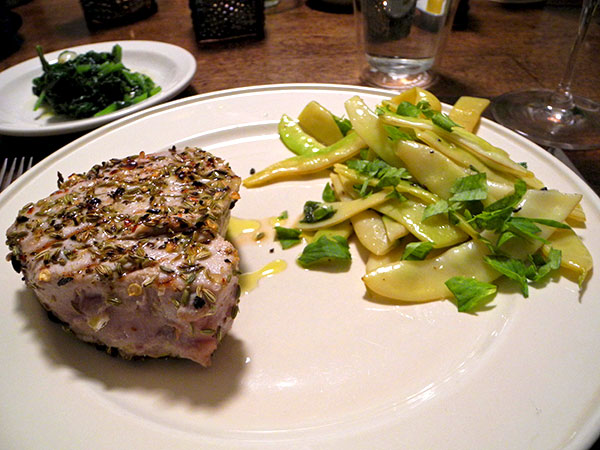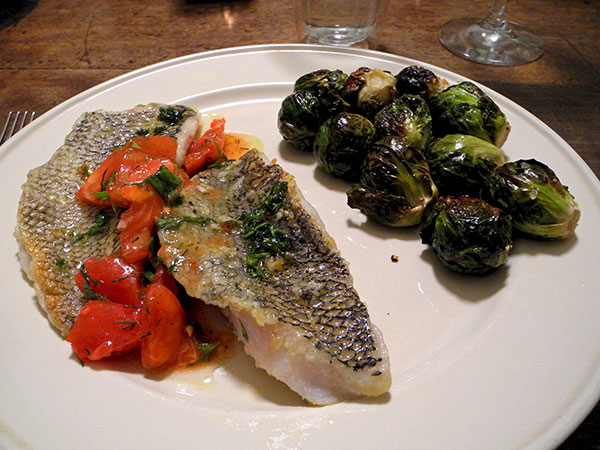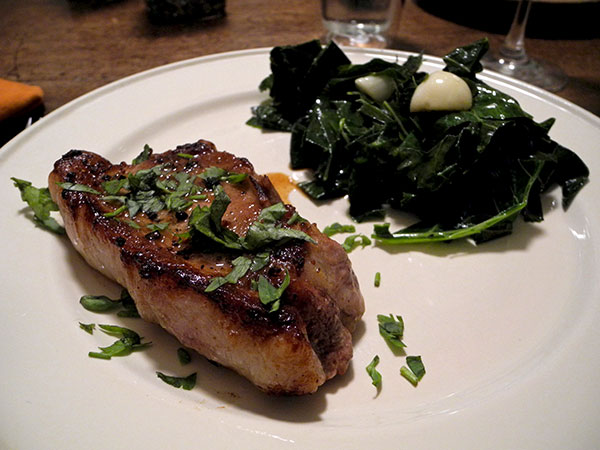Sometimes it may actually be better late than ever.
I arrived at the Greenmarket well after 1 o’clock on Monday, where I discovered that PE & DDSeafood had sold out of everything but swordfish (one steak left), tuna, and scallops. I had intended to pick up one of the less expensive items, but they had already been snapped up. Now able to forget about frugality, I asked for ten large scallops (about three quarters of a pound in this case). After exchanging a bit of banter about the fish, and the singularity of customers unfamiliar with the ways of the market, as I bid Carl and Delores goodbye, I found myself holding a beautiful little silver, clear-eyed fish wrapped in a plastic bag. Delores, who had pressed the Porgy into my hand, explained that she had found it hiding under the ice alone, well after she had sold out the rest of its school chums.
She added that it had been both gutted and scaled, a labor, as I reflected later, of astonishing generosity for a fish which could be bought so modestly. I thanked her and promised that I would give it a good (if temporary) home. I think the meal described here shows I did pretty well by the little Porgy, and it also shows the fortuitousness of my late arrival at the Greenmarket.
My added bounty meant that I would have two seafood courses for dinner. The image at the top shows the stars of each prior to their being put onto an enameled, cast iron grill pan at different points of the evening. The image immediately below is of the finished first course, which was an approximation of grilled whole fish à la Grecque (note that the little fish didn’t take to a proper filleting). The final image is of the second course, which included the scallops, plum tomatoes, and mustard greens.
- one three-ounce whole porgy, rubbed with a mix of chopped garlic from Norwich Meadows Farm, red onion from Phillips Farm, and fresh oregano from Central Valley Farm, along with lemon juice, olive oil, salt and pepper, basted several times while pan-grilled, finished with a bit of the reserved mixture, then boned and placed on a bed of arugula from Migliorelli Farm dressed with olive oil, lemon, salt and pepper
- slices of Il Forni bakery’s ‘Pane di Sesamo’, from the West Side Market
- scallops from PE&DD, stuffed with and rolled in a mixture of wild wood sorrel from Bodhitree Farm, finely-minced garlic from Norwich Meadows Farm, part of a very finely-minced red Thai pepper from Norwich Meadows Farm, olive oil, salt and pepper, then pan-grilled, finished with a drizzle of a bit of lemon and brushed with olive oil
- Green Sausage tomatoes from Norwich Meadows Farm, sliced in half, placed face down on a plate spread with salt and pepper, then dried somewhat and placed in a hot grill pan, turned once, removed, finished with a bit of olive oil and white balsamic vinegar
- lacy purple mustard greens from Lani’s Farm, wilted with oil which had warmed a halved clove of bruised garlic from Norwich Meadows Farm, finished with a drizzle of oil
- the wines were French and Spanish whites, a bottle of Château Gaillard Val de Loire Touraine Sauvignon Blanc 2013, and part of a bottle of Ipsum Verdejo 2012
